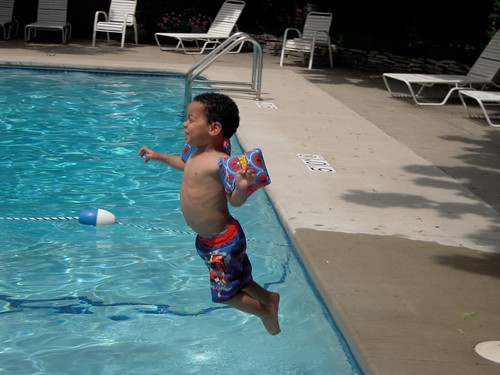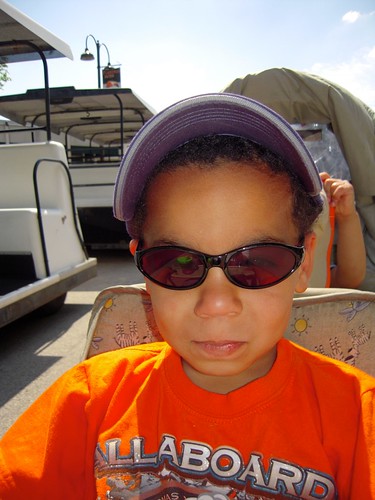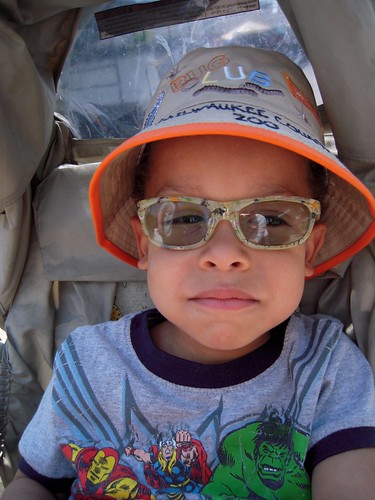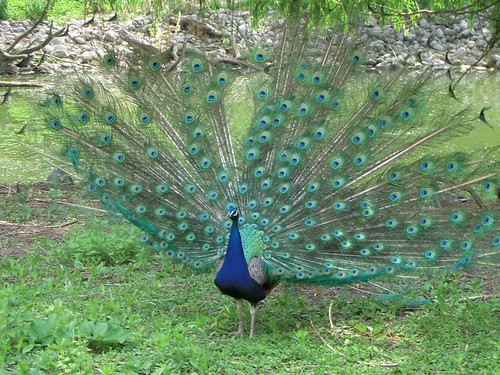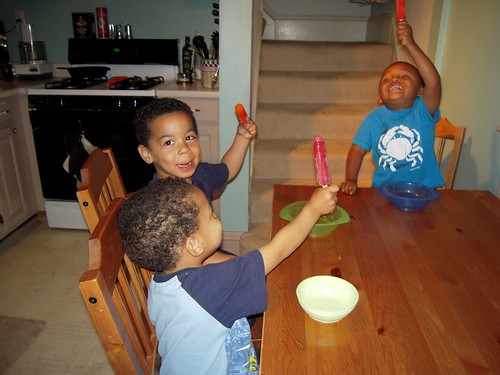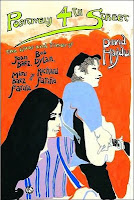
Two books, to cover the last two weeks.
Martha A. Sandweiss'
Passing Strange: A Gilded Age Tale of Love and Deception Across the Color Line enticed me from the bookstore, combining on its cover many of my personal touchstones: the late nineteenth century, sepia-tone photographs of the Brooklyn Bridge, and the inescapable issue of race in America. This is a story of the secret double life of
Clarence King, a notable geologist and friend of both John Hay and Henry Adams. For at least the last 13 years of his life, the (Caucasian) King lived part of the time as (African-American) train porter James Todd, marrying Ada Copeland, a New York City nursemaid and former slave.
Unfortunately, one of the problems with secret lives is that they depend on, well, secrets, so much of Sandweiss' exploration of the relation ship of King/Todd and Copeland relies on speculation. In that way, this is a non-fiction book that would have benefited from more of the tools of fiction -- presumption, redirection, suggestion -- to keep it engrossing and to perhaps suggest aspects of this secret life that the book, and capital-T researched Truth can't reveal. It's an interesting book, but it ultimately is less compelling and less salacious than this particular reader was expecting. What is mysterious and unknowable about this relationship in the book's jacket copy is just as mysterious and unknowable at it's conclusion.
David Hajdu's
Positively 4th Street covers the brief convergence of the lives of Bob Dylan, Joan Baez, Mimi Baez Farina, and Richard Farina. Roughly, this corresponds to the same time period as what Martin Mull refers to as the Great Folk Music Scare of 1961-1965, or the time between Dylan's first appearance at the Newport Folk Festival (as a duet partner with Baez) and his first stab at "going electric" as a folk superstar four years on.
It's a fun read, particularly as it makes stars out of two people (Richard and Mimi) I wasn't familiar with, and people out of the two stars (Bob and Joan) with whom I was. Even if you're not a Dylan fan, I think this book is worth reading just to discover the character of Richard Farina, who claimed that he had a metal plate in his head, that he was a Cuban militant, that he'd once single-handedly sunk a British submarine on behalf of the Irish Republican Army. Farina was both a novelist and a songwriter, and seems to have been fairly accomplished at both, but died young in a 1966 motorcycle crash that oddly echoes Dylan's own (non-fatal) crash a few months later.
There's plenty of pithy and acerbic comments from the late and lamented Dave Van Ronk in the book, as well as frank talk from the Baez sisters and other old folkies. And fun abounds: the marriage of Richard and Mimi was attended by Joan Baez as maid of honor and Thomas Pynchon as best man, the latter in what Hajdu describes as "a moustache so big, it looks like a costume-shop disguise (and may well have been)." Dylan and Richard Farina shoot pool at Henry Miller's house while Miller puts the moves on the Baezes. All the requisite oddballs and opportunists of Greenwich Village appear, some of whom were last seen in Van Ronk's book,
The Mayor Of MacDougal Street.

